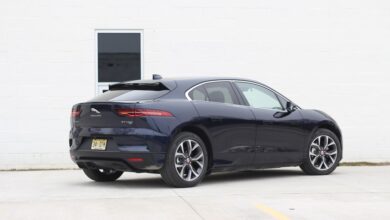Rivian Introduces Second-Generation Vehicles. With the Stock Down 50% Year to Date, Could They Help the Stock Rally?

Here’s why Rivian’s new vehicles are so important to the company.
Rivian Automotive (RIVN 0.60%) has had a difficult 2024 thus far, with the stock nearly cut in half this year. However, with the electric vehicle (EV) maker introducing its second generation of vehicles, the stock’s fortunes could be about to change.
Let’s take a look a Rivian’s next-generation models and see why their introduction could help turn around the beleaguered stock.
New redesigned vehicles
Rivian just introduced its second-generation models of its popular R1S SUV and R1T truck. While the next-generation vehicles look similar on the outside to their predecessors that were introduced in 2021, the company has made major overhauls with the internal designs of the vehicles.
This is important for the stock, because Rivian didn’t have a problem selling its popular vehicles, as evidenced by the 71% increase in deliveries it saw in the first quarter. In 2023, meanwhile, the company was able to more than double both vehicle production and deliveries.
What it has a problem doing is making vehicles it can sell profitably. This showed up in its negative gross margins. In Q1, the company lost $38,784 on every vehicle it sold before corporate costs. This means it lost money just from the material and labor costs to make the vehicles.
One of the big changes to its new-generation models is that the company has switched from a domain-based architecture to a new zonal system. This new system will greatly reduce the number of electronic control units (ECUs) and wiring in its vehicles. This will significantly reduce the cost to make them. Tesla is currently the only other auto company to use a zonal architecture.
With its new zonal architecture, Rivian has been able to reduce its numbers of ECUs per vehicle from 17 to 7, while removing 1.6 miles of wiring. In addition to cost savings, the new zonal system will allow for smoother over-the-air software updates.
Those are not the only changes that Rivian has made, however. It’s redesigned its battery for longer ranges, while also taking out costs. It has also introduced such innovations as high-pressure die castings and heat pumps to improve efficiency and lower costs.
Thus far, the new vehicles have gotten good reviews. Electric vehicle (EV) website Electrek tested both vehicles and came away saying: “Rivian is getting better at making electric vehicles without compromising on its owner experience.”
That’s important because the vehicles are not cheap, with the R1S price starting at $75,900 and the R1T price starting at $69,900. Meanwhile, its top-end trimotor models are priced over $100,000. Quadmotor prices have not been announced, but will be even higher.
Rivian needed to significantly reduce the costs of making its vehicles without sacrificing their high-end performance. It looks like it not only accomplished this, but also made the vehicles better in the process.
Image source: Getty Images.
Can the stock rally from here?
Rivian’s second-generation vehicles are the first step in helping the company flip its gross margins to positive territory. The company seems to have done a nice job of reducing costs while improving the vehicles at the same time. It’s aiming to turn a modest gross margin in the fourth quarter. I think if it can accomplish this, it would be a big boost to the stock.
Becoming gross margin positive is obviously not the final end goal, as that is still a long way from being profitable and generating strong free cash flow. But given the company’s relationship with Amazon, which is its largest shareholder and with whom it has begun providing EV vans, the company has a nice runway to take the steps necessary to gain scale and become profitable down the line.
Rivian stock obviously comes with risk given its early-stage nature. The company has yet to turn a gross profit, or any profit, and it currently burns through cash. However, it appears to be heading in the right direction, and the introduction of its next-generation R1S SUV and R1T truck models will help get the company closer to where it needs to be.
John Mackey, former CEO of Whole Foods Market, an Amazon subsidiary, is a member of The Motley Fool’s board of directors. Geoffrey Seiler has no position in any of the stocks mentioned. The Motley Fool has positions in and recommends Amazon and Tesla. The Motley Fool has a disclosure policy.



